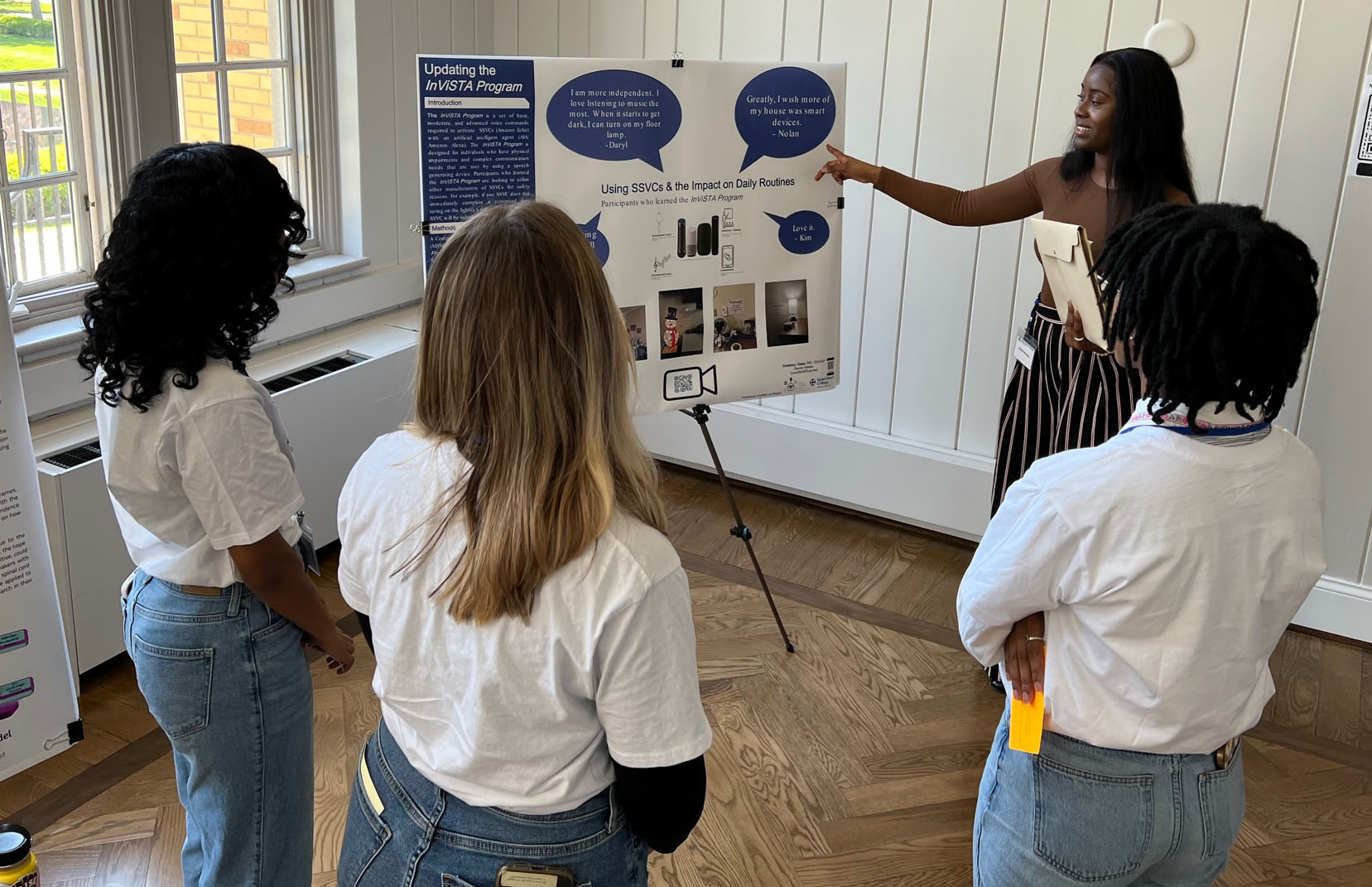A Different Kind of Communication
Saint Mary's Stories
By Susan Kratzer '18
Humans and countless others use speech, sight or touch to communicate with each other and interact with their environment. But how would an organism communicate and reproduce if it didn’t have some of these tools? The plant research of Associate Professor Cassie Majetic attempts to answer this question, as well as give people more information on how humans can impact the environment around them.
“Plants don’t have the ability to vocalize. They can’t communicate in the same ways as people. However, they are still really good at getting information from the world around them and then using their own body structures to communicate and interact with the world,” Majetic said.
According to Majetic, one way plants do this is through scent. Plants do not have a sense of smell the same way people do, but they can sense and produce chemicals which help them interact with each other and other organisms. Even with an inability to communicate vocally with one another, plants still manage to be extremely good at reproducing. Pollinators such as bees, butterflies, hummingbirds or even small mammals help plants reproduce by transferring pollen from one plant to the other when they visit it.
For a long time, researchers believed plants’ communication with other organisms was either visual or food based. Researchers examined color, size, and the number of flowers as well as food rewards such as nectar and pollen to try to understand how plants were attracting pollinators to them, but sometimes, these did not accurately explain the patterns researchers saw.
“People started thinking about other modes of communication. And what they started thinking about was odor and the possibility that plants were releasing smells to bring in pollinators. Once the pollinators arrive maybe they find a reward, maybe they don’t, but that smell entices them to come in, visit the plant, and then leave with male pollen and deposit it somewhere else,” Majetic shared.
Majetic’s research focuses on this scent-based communication by plants, and she conducts her research in an unusual way—by trapping the scents of plants using oven bags used for cooking which have mild scents so as not to affect the plant scent she is collecting. Majetic puts the bag over a flowering plant and inserts a glass filter tube attached to a vacuum pump and sucks the scent from the flower, trapping on the filter. She then uses other chemical analysis techniques to transform the captured scent back into a gas. From there, Majetic can determine what chemicals a plant is producing which may attract a pollinator.
Majetic began her research on this topic while she was in graduate school. She studied an invasive plant species in the United States which was originally from Europe. According to Majetic, people wanted to know why the plant was growing so successfully in the U.S. and how it affected the other plants around it. Majetic studied how the color and scent of the plant attracts pollinators and eventually found that the more heavily scented plants reproduced more.
Today, one of Professor Majetic’s projects is working with wild petunias to study what happens to the shape, size, color, and scent of the flowers if the amount of nitrogen in the soil changes. If aspects of the flowers change, this will change the signals they are sending to pollinators, and therefore, how the plants and pollinators communicate. In summer 2015, Majetic conducted this study with students using horticultural petunias and found that a small amount of additional nitrogen led to an increase in the size of the flowers and a change in some aspects of scent which prompted an increase in visitation from pollinators. However, the results eventually tapered off—a large amount of additional nitrogen doesn’t lead to a larger increase in pollinator visitation. Majetic said this indicates nuances in the communication between plant and pollinator.
“From a big picture perspective what I think this tells us is that these organisms communicate with others in their environment in pretty subtle but important ways. And so, when we change the environment around them, we are likely changing the way they are communicating, in ways that we don’t always know and can’t always recognize,” Majetic said.
Majetic is able to bring her research to the classroom each spring in a class of her design called “plant-animal interactions” which is based entirely on the areas Majetic studies. In addition, Majetic conducts research with her some of her students and said they play a key role in her research.
“I wouldn’t be making progress on my work if I didn’t have awesome undergraduates that I work with,” she shares.
Author Bio

Susan Kratzer '18
Susan Kratzer is a senior political science and English writing major. Saint Mary's has helped Susan accomplish more than she thought possible from studying abroad in Ireland to completing her own research through her senior comprehensive in political science. As a media relation intern, she loves the opportunity to show the stories of students and faculty who make up the Saint Mary's community that has meant so much to her.

